

International
Labour Organization
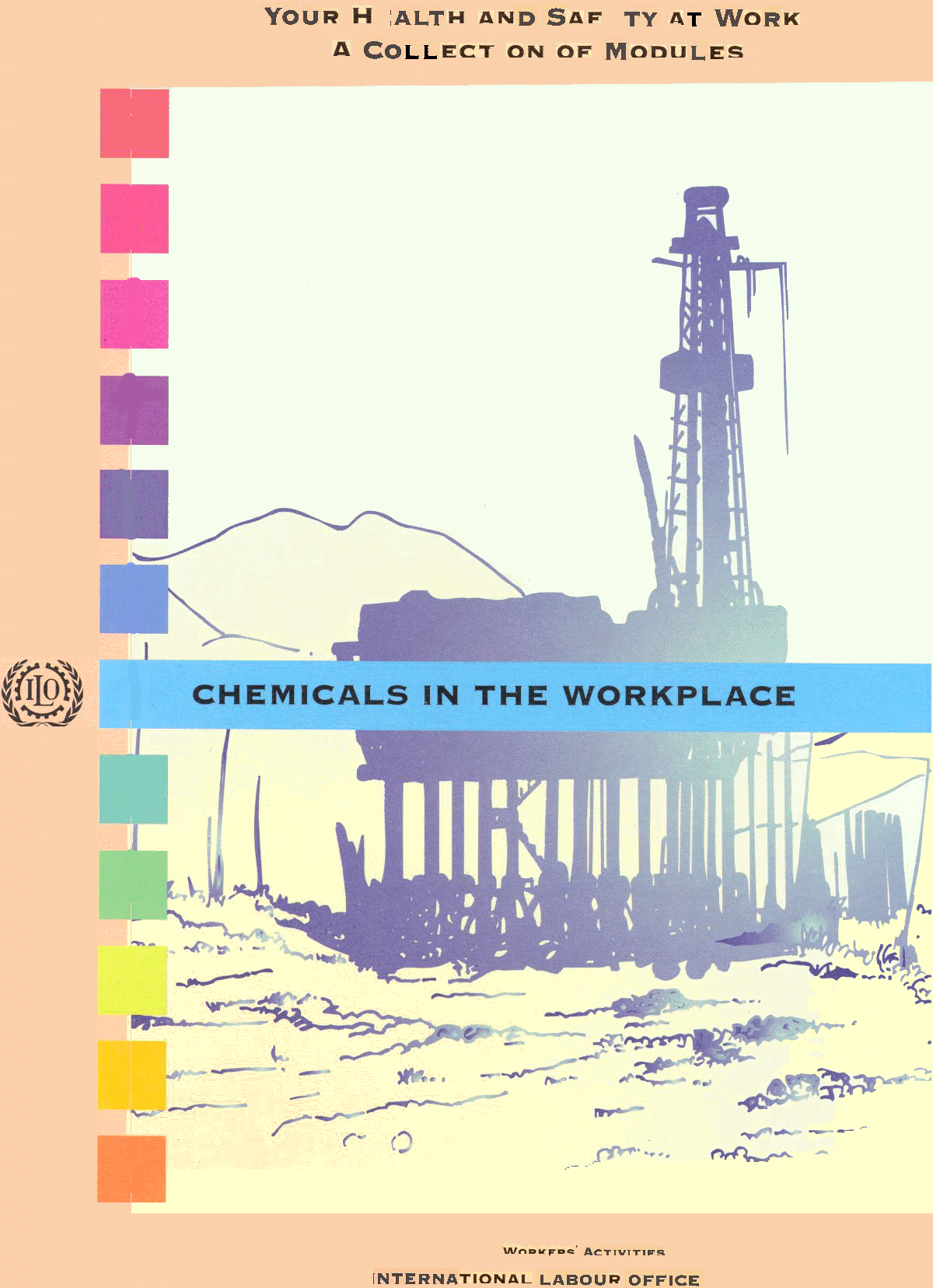 Your
health and safety at work
Your
health and safety at work
CHEMICALS IN THE WORKPLACE
Goal of the Module
This Module provides trainees with background information on chemical hazards in the workplace. Topics discussed include: types of chemical hazards found in the workplace, how chemicals can harm you, how to obtain and understand information about chemicals used at work, and the role of the health and safety representative in ensuring the safe use of chemicals found in the workplace.
Objectives
 |
At the end of this Module, trainees will be able to: (1) give examples of several types of chemicals commonly found in the workplace; (2) give several examples of how chemicals can affect your health; (3) describe at least two ways to obtain and use information about chemicals used in the workplace. |
What is in this Module
Chemicals are a part of everyone's life. There are five to seven million different chemicals known in the world. At least 400 million tonnes of chemicals are produced worldwide each year including agricultural chemicals, food additives, pharmaceuticals, fuels for power production, chemical consumer products, etc. In North America alone at least 1,200 new chemicals are developed each year.
For the majority of chemicals used in the workplace, little or nothing is known about their possible immediate or long-term health effects. |
 |
The frightening reality is that, for the vast majority of the chemicals used and being developed, little or nothing is known about their possible immediate or long-term effects on the health of the workers who produce them or use them at work. Yet workers continue to be required to work with potentially toxic (poisonous or harmful to the worker) substances. In some countries, workers are required to work — with little or no protection — with chemicals that are known to be hazardous to human health. Workers in some developing countries are often required to work with toxic chemicals that have been banned in developed countries because of their hazardous effects. Similarly, agriculture workers in developing countries (and in non-union agriculture jobs in some developed countries) often spray herbicides and pesticides without any form of protection. In most developed countries, workers using those same chemicals dress up almost like spacemen in protective clothing to avoid contamination from the chemicals, and are provided with washing facilities and regular medical check-ups.
Chemicals that are dumped into the environment can cause serious human and environmental problems. |
 |
In many countries chemicals are literally dumped into the environment, often with serious human and environmental consequences. Depending on the chemicals dumped, the results can be serious health problems for the workers (who usually do not know about the dangers from the chemicals) and the community, and permanent damage to the environment. In other countries the laws about chemical disposal are strict in order to protect people and the environment.
Nearly all workers today are exposed to some sort of chemical hazard because chemicals are used in every type of industry, from mining, welding, mechanics and factory work, to office work, etc. In fact, chemical hazards are the most serious health hazard for workers today. Your first line of defence against chemicals is to learn as much as possible about the substances you work with and to prevent exposure to them, no matter how “safe” you may think they are, or how “safe” you have been told they are!
 |
|
|
|
II. Routes of entry/health effects
There are a variety of chemicals that are commonly used in industry. Industrial chemicals can be described in a number of ways, for example by their effect on the worker (whether the chemical is corrosive or causes dermatitis, etc.), or by the physical form of the chemical (that is, whether it is a dust, fume, vapour, gas, etc.).
As discussed in the Module Your body at work, chemicals can enter the body (routes of entry) by:
For more details, see IPCS: Chemical safety training modules: How can workplace chemicals enter your body?, Dust, fumes and gases, solvents, metals, acids and bases, pesticides.
Once toxic chemicals get into your body, they can cause a variety of harmful effects, including immediate (acute) effects or long-term (chronic) effects which may not show up for a number of years after the exposure occurred. Toxic chemicals can also produce local and systemic effects, depending on the nature of the chemical and the route of exposure. (For definitions of these terms, refer to the Glossary in the Instructor's guide to the Modules.)
What kinds of effects can a toxic chemical have?
There are a number of factors that determine the type of toxic effect a chemical can have on you. These factors include:
Table 1 shows some of the types of toxic effects that certain industrial chemicals can cause. The table includes the toxic property of the chemical (for example, whether it is carcinogenic, poisonous, causes an allergic reaction, etc.), the part of the body affected by the chemical, how long it takes until disease develops, the type of effect the chemical causes, and some examples of chemicals that cause those effects.
Table 1.
Types of toxic effects caused by industrial chemicals
| Toxic property | Part of body affected | Time scale of appearence | Effect | Example |
| Irritant or corrosive | Any, but usually the eyes, lungs and skin | A few minutes to several days | Inflammation, burns and blisters of exposed area. Frequently healed after acute exposure. Chronic exposure may lead to permanent damage. | Ammonia, sulphuric acid, nitrogen oxides, caustic soda |
| Fibrogenic | Generally lungs | Years | Gradual cumulative loss of lung function leading to disability and death if there is chronic exposure. | Bauxite dust, asbestos, bagasse |
| Allergic | Any, but frequently lungs and skin | Days to years | In lungs may lead to chronic asthma-like disease and permanent disability. In skin may produce industrial dermatitis. | Toluene, di-isocyanate (TDI), amine hardeners for epoxy resins. |
| Dermatitic | Skin | Days to years | Inflamed, peeling skin rashes. May result from chronic exposure to irritants, allergenic agents, solvents or detergents. | Strong acids, alkalis, detergents, carbon tetrachloride, trichloroethylene. |
| Carcinogenic | Any organs, bu frequently skin, lungs, bladder | 10 to 40 years | Cancer in affected organ or tissue. Ultimately this may cause premature death. | 2-Naphthylamine, certain tars and oils, benzidine, asbestos |
| Poisonous | Any organs but frequently liver, brain, kidney | A few minutes to many years | Death of cells in vital organis with eventula failure of organ to carry out important biological functions. Ultimately can cause death. | Carbon tetrachloride, mercury, cadmium, carbon monoxide, hydrogen cyanide. |
| Asphyxiants | Lungs | Minutes | Gases replace normal oxygen content of air | Acetylene, carbon dioxide |
For more details on the effects, see IPCS: Chemical Safety Training Modules: chlorine, ammonium nitrate fertilizers, liquefied hydrocarbon gases, benzene, halogenated hydrocarbon solvents, lead, chromium and chromium compounds, nickel and nickel compounds, acids, anhydrides and bases and polymers.
The following figures help to explain how chemicals can enter the body and the effects they can have once they are in the body. Figure 1 shows the different routes of entry by which chemicals can enter the body. Figure 2 shows the different organs and tissues that can be affected by certain toxic industrial chemicals.
Routes of entry of chemicals into the human body
Organs and tissues that may be affected by particular toxic industrial chemicals |
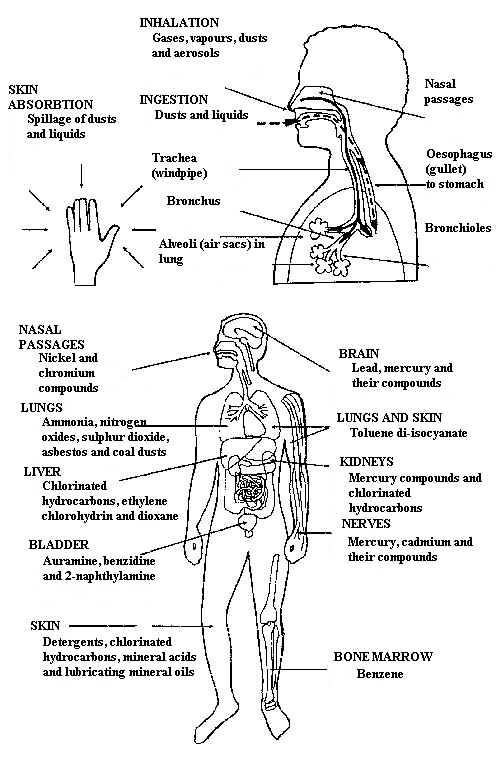 |
It is important to understand that workers may show different physiological responses to industrial chemicals, just as people may show varied responses to different medicines, foods, etc. Some employers may try to select workers who are more “resistant to hazards” (so-called “superworkers”) and remove workers who show any signs of poor health. It is also common for employers to refuse to employ women of childbearing age on work processes that are known to affect the development of the foetus in the womb (such as work involving lead).
Selection of a “superbreed”of workers. |
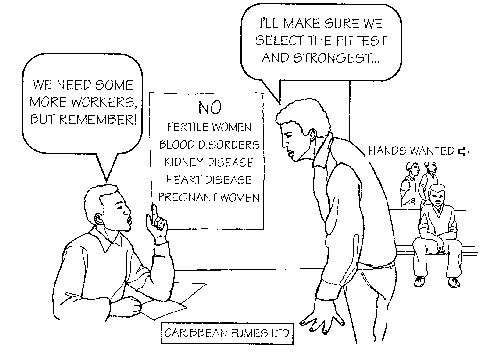 |
A workplace should be safe for all workers
Any union strategy to protect workers against chemical hazards should try to create a working environment where it is safe for all workers — the average worker (male or female) and even vulnerable workers — to work without the job affecting their health. Regular medical examinations must never be used by the employer to eliminate “vulnerable” workers, such as women of childbearing age.
Exposure to toxic chemicals can lead to accidents
Exposure to toxic chemicals can also lead to higher rates of accidents at work. For example, chemicals such as solvents and asphyxiants may slow your reaction time by affecting your nervous system or limiting the amount of oxygen that gets to your lungs. A slow reaction can be very serious (or even fatal) if you are in a dangerous situation that requires an immediate response. Unfortunately, when accidents occur in the workplace, management often blames the worker, claiming he or she was careless. This tendency to “blame the victim” is yet another reason to learn about the substances you work with, to make sure the proper control measures are in place, and to know your rights!
Working around chemicals without the proper protections in place can lead to serious accidents. |
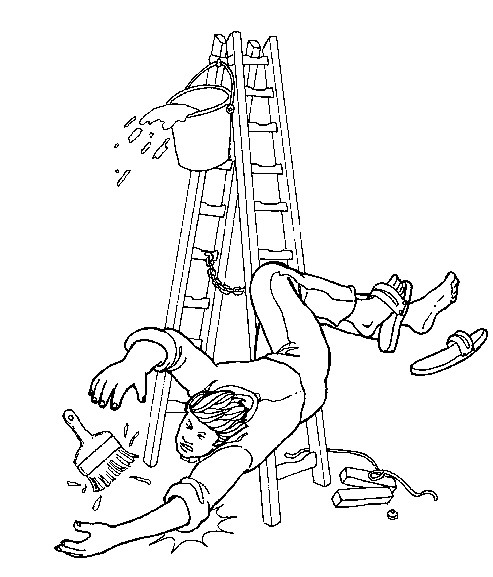 |
 |
|
|
|
III. Types of chemicals found in the workplace
The physical form of a chemical can affect how it enters your body and to some extent, the damage it causes. The main physical forms of chemicals are solids, dusts, liquids, vapours and gases.
Chemicals can change their physical form, e.g. wood into sawdust. |
 |
Dust in the workplace should be
kept at or below “safe” levels. |
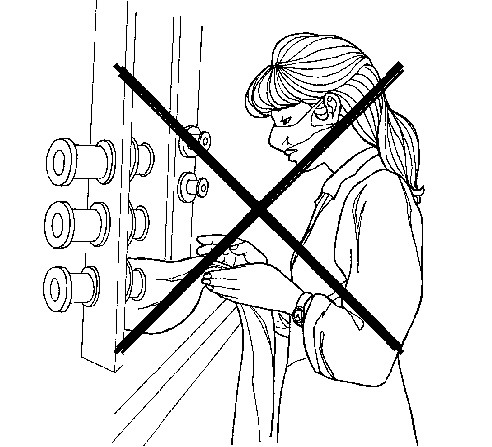 |
Mists and vapours |
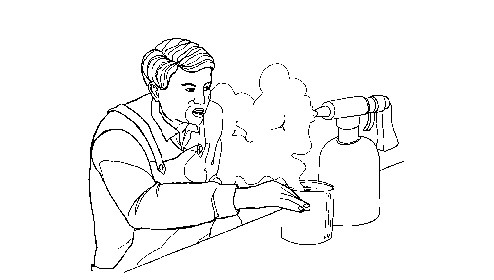 |
F. Effects of chemicals on the environment
Many employers do not dispose of
chemical wastes |
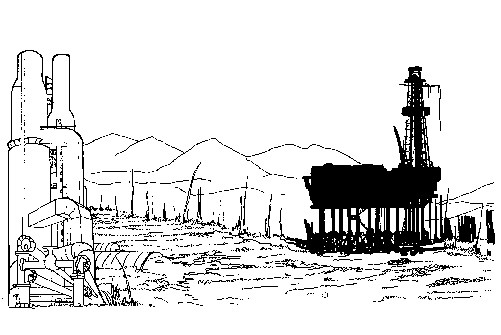 |
Do you know what happens to chemical waste from your workplace?
Many employers are not aware of the hazards associated with toxic chemicals and often do not know how to dispose of chemical wastes safely. (Employers also need to be educated about chemical hazards.) As a result, these employers often simply “dump” waste chemicals into the environment. Convenient dumping grounds are the ocean, rivers, lakes, fields, roadsides, etc. Sometimes these dumping grounds are right in the community where you and your family live and work.
Toxic chemicals which are improperly disposed of may eventually end up in your drinking water, in the places where your children play, in the soil where your food is grown, etc.
In reality, every country is struggling today with the problem of chemical waste and how to dispose of it permanently yet safely. The best solution to date is to use specially approved and well-maintained disposal sites that prevent chemicals from leaking into groundwater and into residential or farming areas. Dumping chemicals into the ocean is never a solution. In fact ocean dumping can have very serious effects - chemicals can get into the food chain, destroy marine life, wash back to shore, etc.
On transport and storage of dangerous chemicals, see IPCS: Chemical Safety Training Modules
Your home “environment” can be exposed to the chemicals in your workplace, too.
Your family can be exposed to your workplace hazards if you bring chemicals or other workplace contaminants home with you on your clothes, hair or skin. To prevent this “spreading the hazard”, if possible wash/shower and change your clothes when necessary before you leave work. Leave your dirty clothes at work or, if you must wash them at home, wash them separately — never with the family wash! Although you may think that the amount of contaminant you can bring home on your clothes or skin is very small and cannot hurt your family, in fact, a small exposure every day for months can add up to a big exposure and can lead to serious illness.
Do not take |
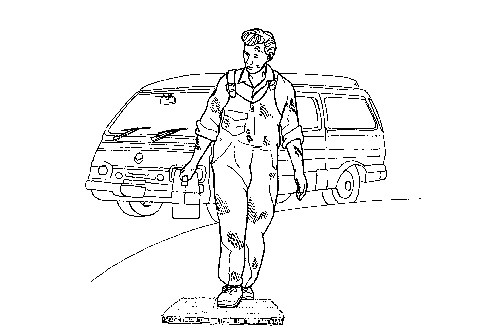 |
Table 2 includes some detailed information on a number of common industrial chemicals. It includes the physical form of the chemical, route of entry, organ(s) that can be affected, type of toxicity, symptoms of disease and examples of industries where the chemicals are used.
Table 2. The physical form, route of entry, affected organ and type of toxicity of some common industrial chemicals.
| Chemical | Physical form | Method
of entry |
Organ(s)
that can be affected |
Class
of toxicity |
Symptoms | Examples of |
Cadmium metal and some of its compounds |
Dusts, vapours, | Inhalation | kidneys |
Poisonous, causing damage to lungs, kidneys on chronic exposure. | Dry burning throat, chest pain, vomiting, headaches | Metal industries, welding processes, heavy chemicals |
| Dusts | Ingestion | |||||
| Toluene di-isocyanate | Vapour |
Inhalation |
Lungs |
Allergenic |
Industrial asthma due to lung effects |
|
| Solid | Spillage on skin |
Skin | Allergenic | Dermatitis | ||
| Mercury and many of its compounds | Vapour (mercury itself) dust |
Inhalation |
Brain and nervous system, kidneys |
Poisonous. Often irreversible damage to nervous system |
Loss of muscular coordination, loss of mental ability. |
Heavy chemicals, laboratory workers, engineering |
| Liquids dusts |
Spillage on skin, ingestion |
|||||
| Cloroform, Carbon tetrachloride Trichloro- ethylene |
Vapour |
Inhalation |
liver, kidneys, skin |
Poisonous. Carcinogenic? Chronic exposure may lead to liver and kidney failure |
Drowsiness |
|
| Liquid | Spillage on skin | Dermatitis | ||||
| Auramine | Dusts, vapour |
Inhalation | Bladder | Carcinogenic to bladder. |
Blood in urine | |
| Dusts | Spillage on skin |
Skin | Irritant | Inflammation, burns |
||
| Nickel and some of its compounds |
Dusts, powders |
Absorption through skin |
Skin |
Dermatitic |
Itching, burning of affected area |
|
| Vapour | Inhalation | Lungs, nasal passages |
Irritant in lungs (nickel carbonyl). Carcinogenic on chronic exposure |
Breathlessness, fever | ||
| 2-Naphthyl- amine |
Dust | Absorption through skin |
Bladder | Carcinogenic to bladder | Blood in urine | Dye and rubber industries; use of chemical banned in many countries |
| Benzene | Vapour | Inhalation Absorption through skin |
Poisonous. Possibly carcinogenic (leukemia?) |
Headaches, nausea, loss of appetite, anemia, dermatitits | Many industrial activities,
especially chemical industry, lacquers, adhesives, paints,etc. |
|
| Asbestos | Dust particles and fibres | Inhalation | Lungs | Fibrogenic, carcinogenic (blue and white asbests) | Breathlessness, loss of lung function | Many industrial activities involving manufacture or use of materials containing asbestos. |
 |
Points
to remember about types of chemicals |
|
|
Continue to Chapter IV. Obtaining and using information about industrial chemicals